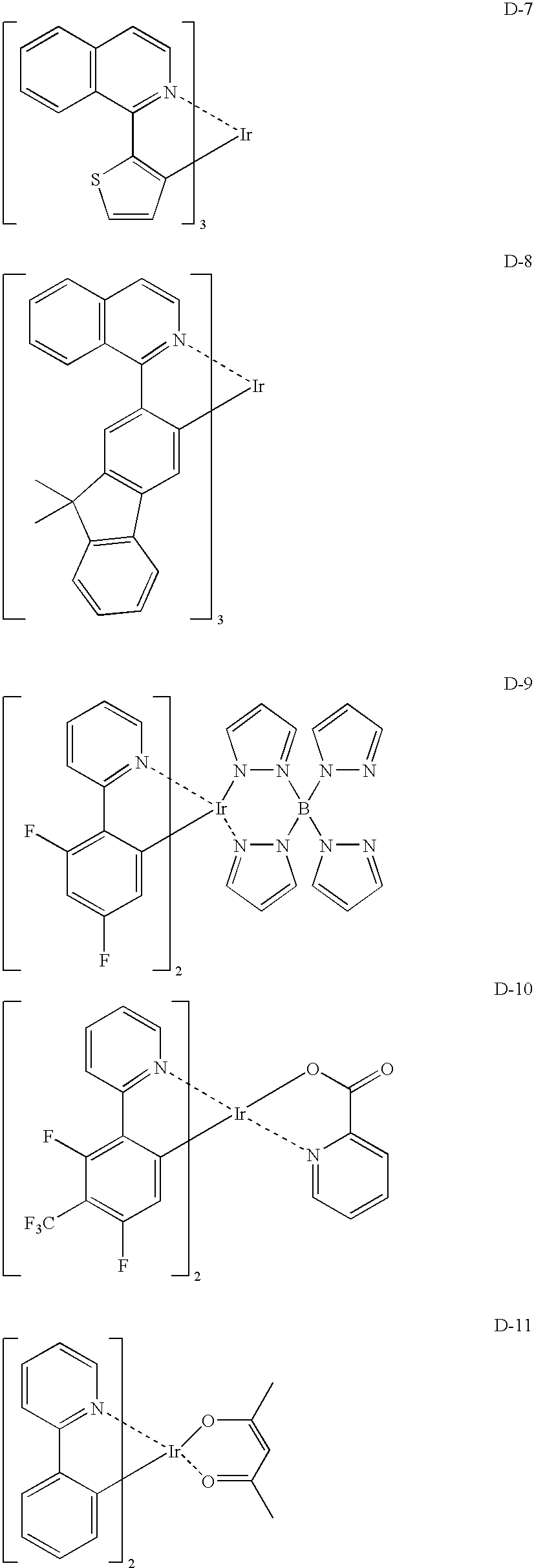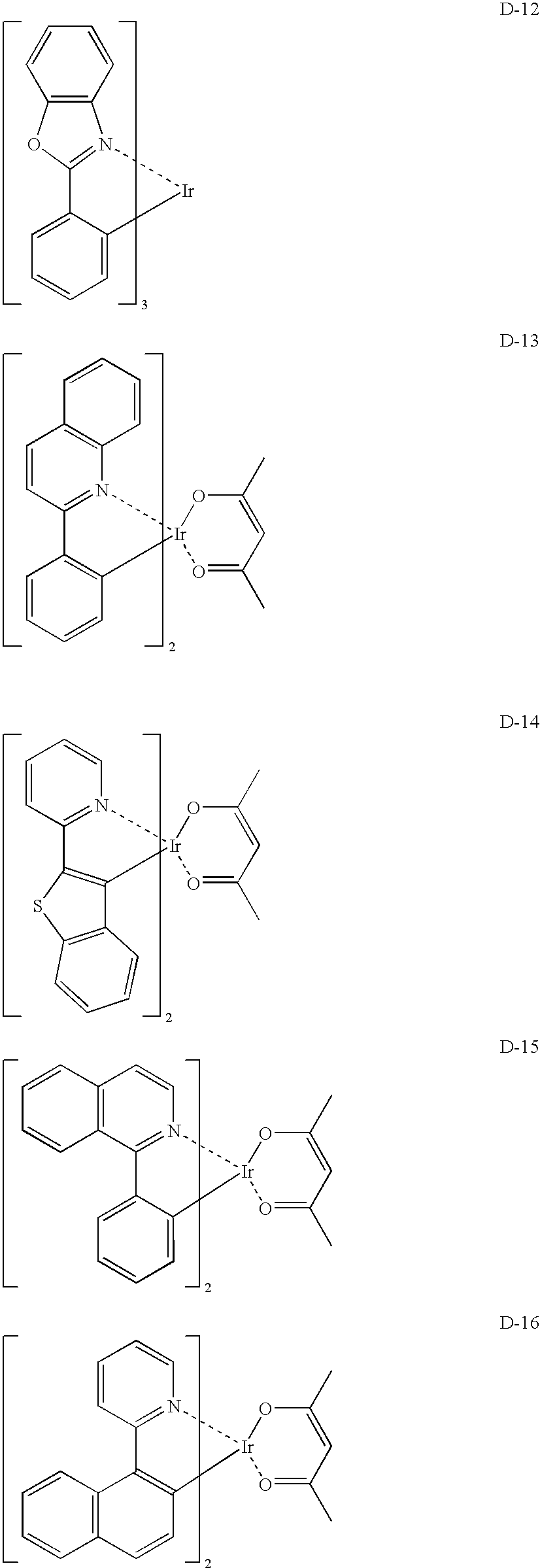Organic electroluminescence device
- Summary
- Abstract
- Description
- Claims
- Application Information
AI Technical Summary
Benefits of technology
Problems solved by technology
Method used
Image
Examples
example 1
[0179] A glass substrate having a thickness of 0.7 mm was subjected to ultrasonic cleaning in 2-propanol and treated with UV and ozone for 20 minutes. Then, silver was deposited thereon as an anode by vacuum deposition to a thickness of 15 nm, and organic layers were deposited sequentially thereon by vapor deposition, to prepare a laminated film having two emission units in the following configuration.
[0180]
[0181] Glass substrate / Ag (15 nm) / 2-TNATA+33-% by mass of V2O5 (20 nm) / 2-TNATA+0.1-% by mass of F4-TCNQ (110 nm) / α-NPD (10 nm) / CBP+5-% by mass of tbppy (20 nm) / BAlq (10 nm) / Alq (20 nm) / LiF (0.5 nm) / Al(1.5 nm) / 2-TNATA+33-% by mass of V2O5 (20 nm) / 2-TNATA+0.1-% by mass of F4-TCNQ (43nm) / α-NPD (10 nm) / CBP+5-% by mass of tbppy (20 nm) / BAlq (10 nm) / Alq(32 nm) / LiF (0.5 nm) / Al (100 nm)
[0182] In the expression above, the term “+” in 2-TNATA+V2O5, 2-TNATA+F4-TCNQ, and CBP+tbppy (light-emitting layer) means that the compounds were co-deposited.
[0183] An emission area of 50 mm×50 mm in...
example 2
[0194] A device was prepared in a similar manner to Example 1, except that the distance between light-emitting layers was changed from 125 nm to 170 nm while the total thickness of the layers was preserved.
[0195]
[0196] Glass substrate / Ag (15 nm) / 2-TNATA+33-% by mass of V2O5 (20 nm) / 2-TNATA+0.1-% by mass of F4-TCNQ (65 nm) / α-NPD (10 nm) / CBP+5-% by mass of tbppy(20 nm) / BAlq (10 nm) / Alq (20 nm) / LiF (0.5 nm) / Al (1.5 nm) / 2-TNATA+33-% by mass of V2O5 (20 nm) / 2-TNATA+0.1-% by mass of F4-TCNQ (88 nm) / α-NPD (10 nm) / CBP+5-% by mass of tbppy (20 nm) / BAlq (10 nm) / Alq (32 nm) / LiF (0.5 nm) / Al (100 nm)
[0197] The device obtained was evaluated in a similar manner to Example 1. The results are shown in Table 1. The peak intensity declined slightly, compared to that in Example 1, but light emission that was sharper in emission spectrum than that in the Comparative Examples was obtained.
[0198] Structures of the compounds used in the above-described luminescent devices are shown below.
TABLE 1Pea...
PUM
 Login to View More
Login to View More Abstract
Description
Claims
Application Information
 Login to View More
Login to View More - R&D
- Intellectual Property
- Life Sciences
- Materials
- Tech Scout
- Unparalleled Data Quality
- Higher Quality Content
- 60% Fewer Hallucinations
Browse by: Latest US Patents, China's latest patents, Technical Efficacy Thesaurus, Application Domain, Technology Topic, Popular Technical Reports.
© 2025 PatSnap. All rights reserved.Legal|Privacy policy|Modern Slavery Act Transparency Statement|Sitemap|About US| Contact US: help@patsnap.com



